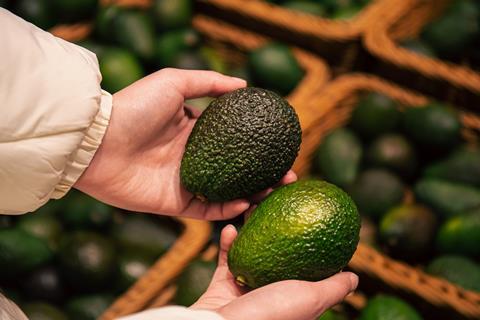The avocado trade will continue to grow in an increasingly competitive market, according to a Rabobank report

Rabobank has published its World Avocado Trade Map, charting global avocado production, consumption, and trade.
According to the group, avocado trade will continue to grow over the next few years, but the market will be more competitive, forcing operators to be not only more efficient but also increasingly sustainable.
Global avocado production expanded by about 7 per cent during the past decade, Rabobank said.
“Attractive prices and returns during that period were relevant drivers to expanding production in key regions,” explained Cindy van Rijswick, global strategist – fresh produce, farm inputs at Rabobank.
Production statistics
In Mexico, which currently accounts for 30 per cent of global avocado output, production grew by about 6 per cent during the past decade.
In Colombia, Peru and Kenya, production increased roughly 15 per cent,12 per cent and 11 per cent during the same period, accounting for 12 per cent, 9 per cent and 6 per cent of current global production respectively.
On the other hand, the US, which still among the world’s largest avocado-producing countries in 2012, dropped a few places in the ranking and is no longer a top ten producer.
Rabobank noted that increased avocado production in countries with complementary harvesting seasons had allowed year-round availability in key markets, including the US, the EU, and some markets in Asia.
With production in Mexico extending year-round, it now reaches a seasonal low in June and July when production peaks in the US (California) and Peru, providing steady supply to the US market.
Mexico tops export table
“With exports increasing at an average annual growth rate of around 8 per cent over the past decade, Mexico reaffirmed its place as the largest avocado-exporting country in the world, surpassing 1m metric tons in 2022,” said Van Rijswick.
Rabobank confirmed that the primary destination for avocados was the US market, where product versatility and promotional campaigns have helped to create demand for avocados in retail and foodservice channels.
Globally, the US remained the largest destination market, with imports increasing by about 8 per cent from 2012 to 2022.
Exports from Peru, Spain, and Kenya expanded by about 22 per cent, 6 per cent and 15 per cent respectively between 2012 and 2022, mainly supplying the European market.
From 2012 to 2022, imports increased in the Netherlands (up 14 per cent), Spain (20 per cent), France (8 per cent), Germany (16 per cent) and the UK (12 per cent).
Among the top ten avocado-importing countries, imports to Chile grew the most, the report outlined.
Market value
The estimated global commercial market value of fresh avocados was around US$18bn in 2022.
“We believe there is room for significant growth in several markets around the world, as per capita consumption is highly variable,” said Van Rijswick.
In terms of per capita avocado availability (which is used as an indicator of consumption), Mexico led, with a global record of about 9kg of fresh avocados per person per year, followed by Chile with almost 8kg.
Australia and the US completed the list of countries with over 4kg per capita.
Sustainability concerns remained on the agenda for avocado producers, Rabobank said, with water usage being the main issue discussed.
Partly because of this, avocado growers had invested in advanced irrigation systems to improve water efficiency.






